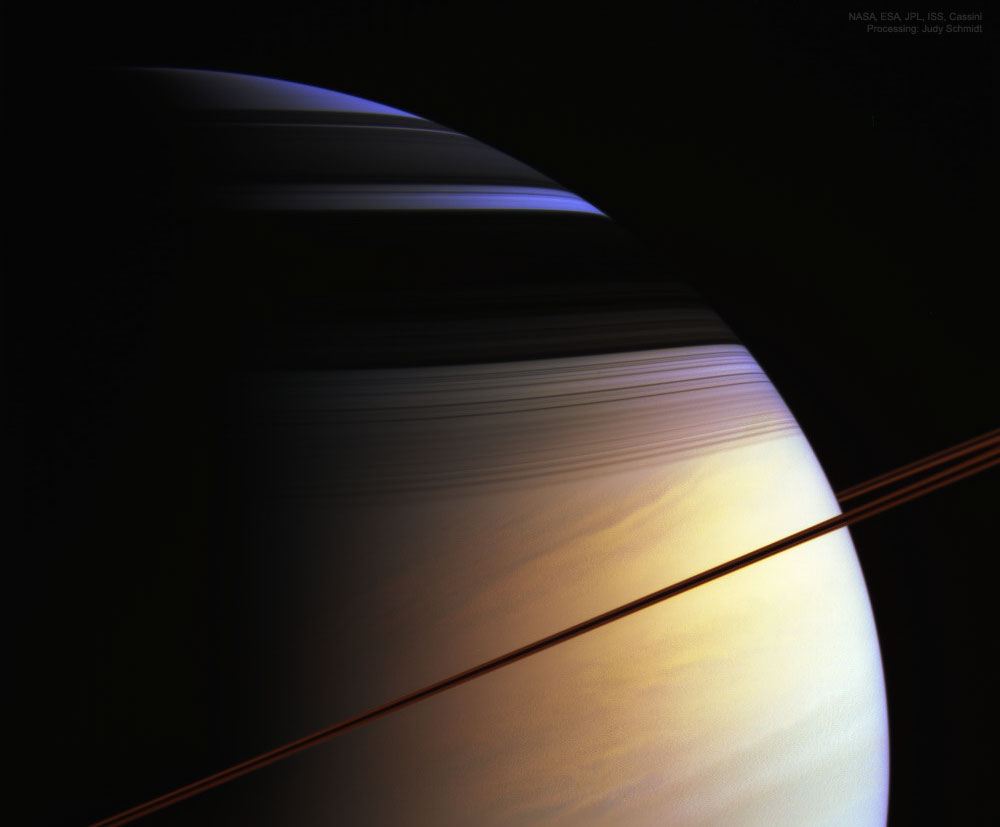卡西尼号影像:土星的色泽
2020 March 30
The Colors of Saturn from Cassini
Image Credit: NASA, ESA, JPL, ISS, Cassini Imaging Team; Processing & License: Judy Schmidt
Explanation: What creates Saturn’s colors? The featured picture of Saturn only slightly exaggerates what a human would see if hovering close to the giant ringed world. The image was taken in 2005 by the robot Cassini spacecraft that orbited Saturn from 2004 to 2017. Here Saturn’s majestic rings appear directly only as a curved line, appearing brown, in part, from its infrared glow. The rings best show their complex structure in the dark shadows they create across the upper part of the planet. The northern hemisphere of Saturn can appear partly blue for the same reason that Earth’s skies can appear blue — molecules in the cloudless portions of both planet’s atmospheres are better at scattering blue light than red. When looking deep into Saturn’s clouds, however, the natural gold hue of Saturn’s clouds becomes dominant. It is not known why southern Saturn does not show the same blue hue — one hypothesis holds that clouds are higher there. It is also not known why some of Saturn’s clouds are colored gold.
Activities: NASA Science at Home
Tomorrow’s picture: galaxy center
卡西尼号影像:土星的色泽
影像提供: NASA, ESA, JPL, ISS, Cassini Imaging Team; 影像处理与授权: Judy Schmidt
说明: 土星的色泽是怎么来的?这幅以土星为主题的影像,其中的色泽,比人如果漂浮在这颗环系巨行星附近之肉眼所见,要稍微夸大一些。这幅影像,是由在2004年至2017年之间探索木星的卡西尼号太空船摄于2005年。影像中,壮丽的土星环乍看像一道略弯的线条,其棕色的色泽部分来自它的红外辉光。而最能呈现土星环复杂结构的,反而是它投射在这颗行星上半部表面的暗影。土星的北半球之所以看来有点泛蓝,原因和地球会有蓝天的成因雷同,源自这二颗行星清朗天空中的分子,散射蓝光的能力强于散射红光。然而在望进土星的云层时,土星云自然的金黄色泽变得极为明显。不过,为何土星的南半球并未有泛蓝的色泽,其原因目前仍不明,假说之一认为或许和该处的云层较高有关。此外,为何有些土星云会是金色的,其成因也未明。
Activities: NASA Science at Home
明日的图片: galaxy center


会不会是某种化学元素?